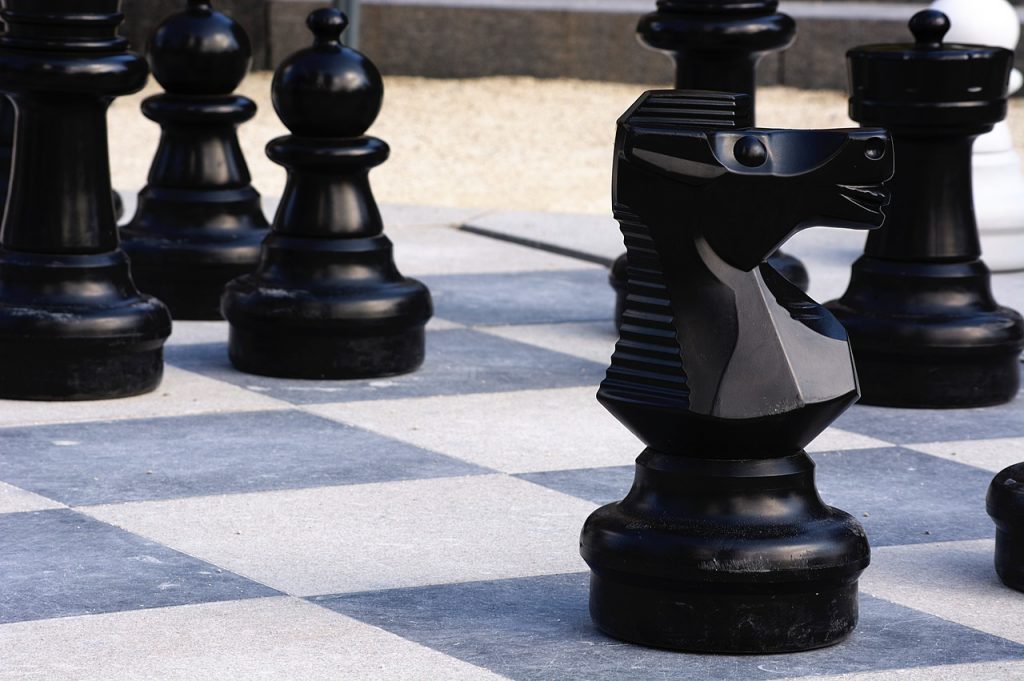Table of Contents
The Marshall Gambit
The Marshall Gambit is an interesting opening that white can choose after they have played with the queen’s pawn. This must not be confused with the “Marshall attack” in the Ruy Lopez, where black plays with an aggressive d5.
You can play the Marshall gambit with white in case you want to get an active position with white. The sacrifice consists in letting black take a pawn on the center of the board, and using the open lines to set up an attack.
Some lines are surely pretty dangerous for both sides, and white needs to be careful too. But the initiative you can get in this opening is something to be considered, and for sure, you will have great fun playing this.
Also, this gambit is not very common, so there are high chances that your opponent doesn’t know the theory. If black doesn’t defend carefully, he can get mated very soon, but don’t get so confident, white needs to play skillfully too.
If you want to destroy the semi-slav players with the Marshall gambit make sure you read this post until the end!
Mainlines of the Marshall gambit

The Marshall gambit starts with the following moves:
Instead of the regular Nf3. At first, it doesn’t really look like a gambit, but white’s idea is really interesting here, the game follows dxe4 5.Nxe4 Bb4+ 6.Bd2 Qxd4 7.Bxb4 Qxe4+ and this is the real gambit!
Here white has two moves:
- Be2
- Ne2
Both lines are really good for white, and we will take a look at both, but let’s start with Be2 which seems like the most logical:
This is considered the starting position of the Marshall gambit, and we already have a key moment on the board! There are several possible moves for black:
- Na6
- Qxg2
- c5
Na6 is the main move in this position, and that is simply because Qd6 is a huge threat, so black tries to vanish the bishop as fast as he can. However, white can protect his bishop, which is a very powerful piece, the game continues Na6 9.Ba5 b6 10.Qd6 Bd7 (taking the bishops would lose to Rd1 and there is no effective way to defend Qd8#) 11.Bc3 f6 and white has a comfortable position.
Qxg2 is the line for those who are not afraid of defending a really hard position and making white proof that he has the advantage. Of course, playing this will be really hard with white, and many things could go wrong. The game could continue Qxg2 9.Bf3 Qg5 10.Ne2 which is very scary, because now white will play Rg1, and maybe castle long, sure white has a great lead-in development here.
But for those who would like to play this way, there is a similar yet different c5 line, which is the same but with a little improvement. The game follows c5 9.Bxc5 Qxg2 10.Bf3 Qg5 11.Qd6 Nd7 12.Ba3 Ne7 13.Be4 Qh4 14.Bc2 Ng6 the difference here is that now the move 10…Qg5 comes with tempo. In this position, white has more possibilities to win.
Now, let’s see what happens if white wants to play the second interesting line with Ne2:
Here it seems like we have way less chances, now there seems to be no way to play actively.
But here white has an incredible move: Bf8!! This is a beautiful move, the bishop can’t be taken, otherwise, Qd8# loses on the spot. The game could continue Ne7 10.Bxg7 Nb4 11.Qd6 Nd3+ 12.Kd2 Nf5 13.Qxd3 Qxd3+ 14.Kxd3 Nxg7 15.Kc3 is the correct line to get equality with black.
Before you ask, the move 11…Nc2+ instead of Nd3+ is too greedy for black, here white gets advantage: Nc2+ 12.Kd2 Nxa1 13.Bxh8 Qc2+ 14.Ke1 Qb1+ 15.Qd1 Nc2+ 16.Kd2 Qxd1+ 17.Kxd1 Nb4 18.Nc3 and we end up having an endgame with a great advantage.
Plans and ideas in the Marshall gambit

The plan is to gambit a pawn in the center so we can use the open files to attack the king. This is what we essentially saw with the move Qd6 by white. On the other hand, black will have to defend his position and make his material advantage come on top at the end.
Both sides will have to play fiercely, and this line isn’t easy to play for any of both players. The advantage of the Marshall gambit is that not everyone will know the lines, so you can get an easy win against a player not familiarized with the moves.
As a last tip, if you face the Marshall gambit and don’t want to enter into the mainlines you can decline the gambit, for example, 1.d4 d5 2.c4 e6 3.Nc3 c6 4.e4 Nf6 5.e5 Nfd7, and well, you got the space disadvantage, but this is a lot quieter than the Marshall gambit lines.
Sample games in the Marshall gambit
Here is an interesting game on the Marshall gambit played by GM Levon Aronian!
You may also like:






